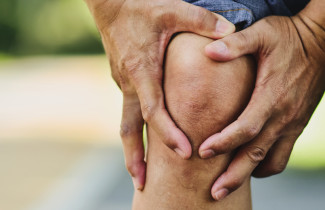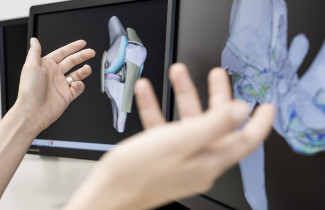Bone and cartilage research in applied physics initially started as pioneering research. Today, it is recognised as cutting edge all across the globe.
- Text and podcast Marianne Mustonen
- Photos Raija Törrönen, Mostphotos ja Petri Tanska
“Bone and cartilage research has a fine and long history in our university,” says Professor Jukka Jurvelin, Dean of the Faculty of Science and Forestry.
“Research in this field began at Kuopio University Hospital already in the 1970s, under Chief Physicist Paavo Karjalainen and Professor Esko Alhava. Physicists and orthopaedists at Kuopio University Hospital were working together to develop equipment for osteoporosis research and applied these methods to clinical diagnostics.”
In the early 1980s, Jukka Jurvelin, a young student of physics at the time, was hired to do a Master’s thesis project at the Department of Anatomy in a research project on articular cartilage, led by Professor Heikki Helminen.
“I was the first physicist ever to work there,” he says.
“Back then, the effect of physical loading on the mechanical properties of articular cartilage was studied using biomechanical measurement methods.”
Jurvelin continued his studies to become a hospital physicist, and he defended his PhD in 1991 on the association of articular cartilage structure and composition with functional properties of tissue.
“Our research in Kuopio was completely pioneering in the field. We had to design our research equipment before we could get down to doing actual research. A local slaughterhouse provided us with bovine knee joints for research. They are large in size and good for research, since their structure is similar to that of a human knee joint.”
“In my PhD project, I and a colleague of mine developed a clinical measurement device that enables the examination of cartilage health in the operating room by applying mechanical pressure. This device for the measurement of articular cartilage stiffness was quite definitely among the first commercial devices developed in our university, and also led to wider development of commercialisation processes.”

If articular cartilage starts to soften, it is an indication of poor cartilage health.
Jukka Jurvelin
Professor, Dean of the Faculty of Science and Forestry
The work of Jurvelin’s research group also attracted interest in the international scientific community. His years spent as a post doc in Switzerland brought more experience and a new perspective to research.
“It has been clear to me right from the start that I, as a researcher, must apply for research funding. This principle is still strong in our research groups. It is important for young researchers to see that their ideas have wind in the sails also scientifically.”
“Our first-generation researchers, Professor Juha Töyräs, Professor Rami Korhonen and Professor Miika Nieminen were very good to begin with, and they weren’t afraid of hard work. The same is true for our second generation of researchers, such as Professor Simo Saarakkala,” Jurvelin commends.
Currently, the focus of research remains on early diagnostics, but more and more attention is also being paid to the prediction of articular problems. Computer models are used to calculate probabilities of disease development.
“The development of knee osteoarthritis can be predicted with mathematical models using joint loading data from a treadmill and magnetic imaging. Ultrasound imaging and microscopic methods also support modelling. In addition, X-ray imaging is still widely used, and there have also been significant improvements.”
Radiocontrast agents can be combined into new, intelligent cocktails.
Jukka Jurvelin
Professor, Dean of the Faculty of Science and Forestry
In the future, it should be possible to do increasingly advanced articular and bone diagnostics in primary health care, perhaps even at home.
“By gaining a better understanding of a patient’s articular health already in primary health care, it would be possible to address the underlying reasons more efficiently and cost-effectively than before. For instance, the significance of a joint misalignment could perhaps be assessed in more detail,” Jurvelin says.
“Osteoarthritis doesn’t develop overnight. When cartilage damage proceeds and cartilage tissue gets completely eroded, the only option for treatment is to install an artificial joint. Although this is an effective treatment, it is important to prevent the development of osteoarthritis.”
In most cases, cartilage damage develops during movement due to excessive or wrong kind of mechanical loading of the joint. A local cartilage damage can be repaired by cartilage cell transplantation.
Cartilage cells are collected from non-load-bearing cartilage. These cells are then cultivated and multiplied in cell cultures, and the resulting cellular jelly is implanted on the damaged area. The repaired area is protected by a periosteal flap and new cartilage-like tissue should start growing there.
However, cartilage cell transplantation is not suitable for the treatment of slowly developing osteoarthritis.





